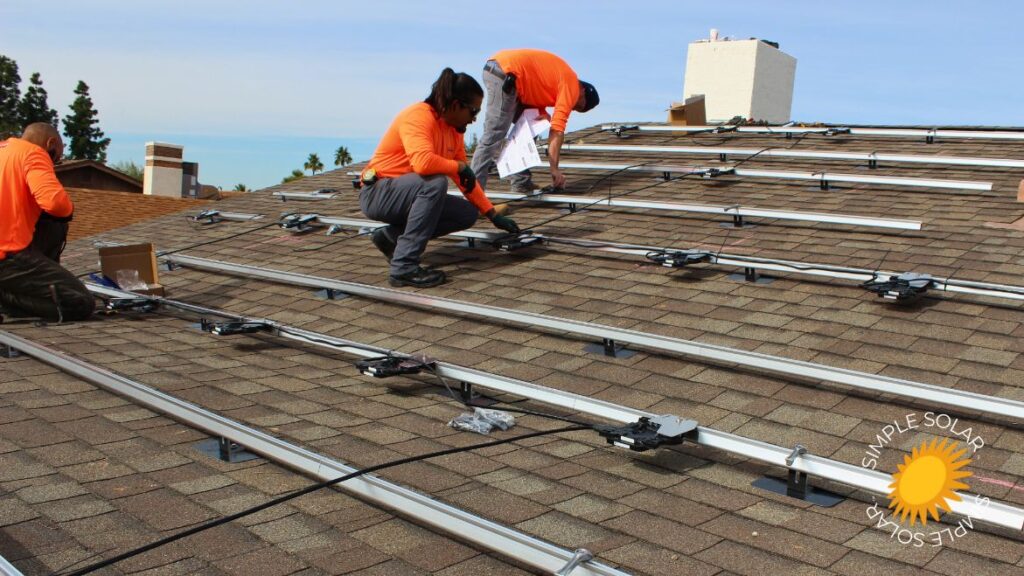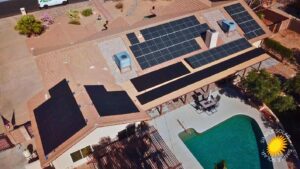Over the last few years, many households have been switching to solar power systems as a source of energy. That’s because they are cost-effective and environmentally friendly.
That said, one of the things you should strive for when installing solar panels is extending their lifespan. You’ll be setting yourself up for decades of affordable or free energy. Simple Solar shares a few solar panel maintenance tips for extending their lifespan.
Buy Quality Panels
The first measure you will need to take is purchasing quality panels. They will last a long time without causing you too many issues during their lifespan. The best way to know you’re getting quality solar panels is by purchasing from a reputable manufacturer.
The more solar panels become popular, the more people get into manufacturing these products. That means there are plenty of options in the market. So, how will you know which company to purchase from? Some of the things to look for include the following:
Warranty
Even though you can go for years without experiencing issues with your panels, a long-term warranty is important just in case something happens. Read the terms of the warranty to understand what it covers. There are two types of warranty which are performance warranty and product warranty.
Many manufacturers will back their solar panel maintenance with a 25-to-30-year linear performance warranty. This is to guarantee you that the panels will keep producing a certain percentage of power for the warranty period. Product warranty protects you from any defects arising from manufacturing or workmanship errors.
Technology
You may also want to check which type of solar panels the manufacturer produces. The main ones are monocrystalline and polycrystalline. Each has pros and cons, and the one you get will determine how much you spend and how much electricity it produces.
Monocrystalline panels are usually more efficient as they allow you to generate more power with fewer panels. They also take up less space but are the costlier option. Polycrystalline panels are not as efficient, and you would have to buy more panels to produce the same amount of energy. But while they take up more space, they are the cheaper option.
Something else to look for is the solar panel temperature coefficient. This is the amount of power your panel will lose for every 1°C temperature increase above 25°C. Check the manufacturer’s data sheet to learn the panel’s tolerance to temperature increase. For most solar panels, the temperature coefficient is -0.5%/degC. This means the panel loses 0.5% of its power for each temperature degree increase. The less the figure, the better.
Aside from temperature degradation, you also have to factor in annual degradation. High-quality solar panels have a lower degradation rate meaning they still produce adequate energy more than 20 years after installation.
A solar panel with an annual degradation rate of 0.5% or less is good because it indicates that even after 20 years, your solar panels will be producing about 90% of their initial output, which is still good.
The Manufacturers Location
Lastly, check where the manufacturer is located. The close they are to you, the better. If issues arise and you have to return the product to the manufacturer, it will be much easier. Several U.S. manufacturers are producing high-quality solar panels. In addition, several Korean and European companies are setting up new plants in the U.S., so you have plenty of options to pick from.
Not sure where to start? Don’t worry. At Simple Solar, we’ve got you. We have partnered with the best manufacturers helping customers access top-tier equipment. We also offer an array of warranties, including maintenance coverage, manufacturer warranty, system warranty, roof leak warranty, and energy guarantee.
Clean Your Solar Panels Regularly
Because of their location, solar panels get exposed to different types of dirt. This includes dust, leaves, and bird droppings. Such things can prevent the solar panels from absorbing enough light, which in turn affects their output.
In addition, inspect your panel every few weeks to ensure no sharp objects like rocks are around the panels. Cleaning the panels regularly will keep them efficient.
Use a Solar Backup Battery
Solar batteries store excess energy, which you can use during overcast days or nighttime when there’s no sun. This ensures you don’t experience outages and reduces the load on your panels, extending their lifespan.
Schedule for Regular Inspection
Schedule regular inspections to ensure your systems are operating efficiently. This is the chance to check for damage and address them before they become bigger problems. If you choose to DIY the inspection and discover damage, allow our experts to fix the issue for you. Handling the repairs yourself without knowledge of solar panels can worsen the issue.
Protect Your Panels During Extreme Weather
Quality solar panels are made to withstand bad weather. They can withstand an inch of hail falling at about 50 mph. Watch out for big storms and harsh weather like heavy rain. Take precautions by covering the solar panels with tarps if the weather channel predicts extreme weather. This will protect them from damage.
Apply a Protective Coating Every Few Years
Although the panels already have a pre-installed protective coating, with time, harsh weather will wear the coating down. Applying the protective coating extends the solar panels’ lifespan.
Extend Your Solar Panels’ Lifespan
Now that you know the tips for extending your solar panels, ensure you take the right measures. You can do this by partnering with the experts at Simple Solar. We will help you get quality solar panels meant to last a long time. Contact us for more tips on how to get the most out of your solar panels.





